Top 14 Heritage Trails of Karnataka
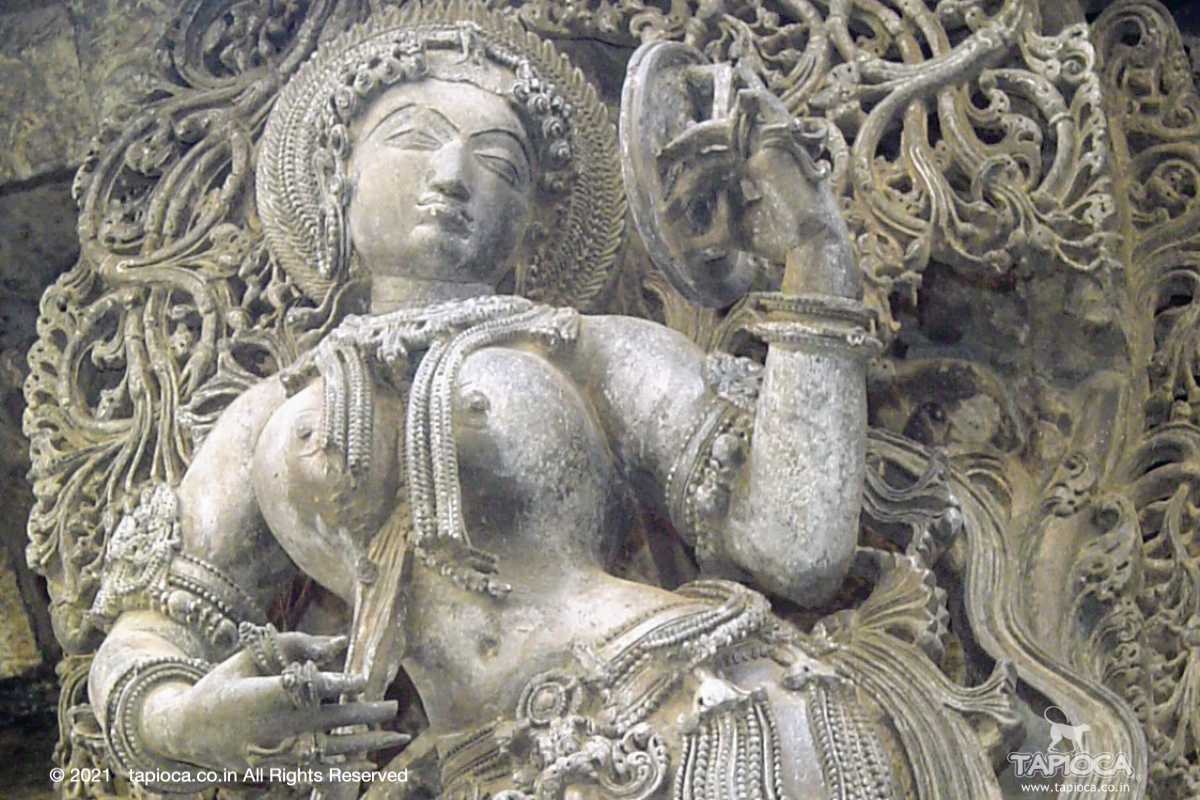
Belur
Image in the Belur Temple
V
isit these 14 heritage sites... you've practically skimmed through the fascinating story of Karnataka from Badami Chalukyas of CE 540 to the modern day Kingdom of Mysore.Mysuru
Mysore tops the list. This is a modern city with old-world charm as its character. Classical music and dance, art and literature, and time-honoured crafts are living traditions in this tourist friendly city. Being the erstwhile capital of the Kingdom of Mysore expect anything from magnificent palaces, majestic buildings, gardens and boulevards in the itinerary.
Siting inside an arc formed by the Western Ghats mountains and the wildlife sanctuaries, you can anchor Mysore as the base point to explore the nearby attractions.
Srirangapatna
This island near Mysore is formed by River Kaveri. The island has religious, historic and military significance.
At the confluence point is the Sri Ranganathaswamy Temple (Adiranga) concecrated in CE 984, after which this island is named. This temple is first of the five sacred temples (Pancharanga Kshetram) dedicated to Lord Vishnu in Ranganathaswamy form alongs the banks of Kaveri River.
Thanks to the strategic nature of the island with River Kaveri forms a natural barrier, Tipu Sultan built the fort here. This is the site of the Battle of Seringapatam ( CE 1799 ) the final and decisive battle of Fourth Anglo-Mysore war. Post this, there was no major power in India to challenge the East India Company's military.
Other major attractions are Tipu's mosque, Mausoleum, Summer Palace, Wellesley Bridge and the dungeons where British officers were once imprisoned and Triveni Sangama the point where River Kaveri confluence.
Combine your Mysore visit with Sirangapatna.
Hampi
Hampi was the capital of the Vijayanagara Empire, that ruled southern India till around CE 1565. Though it lies in ruins today, you can easily appreciate the boldness and architectural majesty of the Vijayanagara. It's difficult to say what will overwhelm you - the geography of Hampi or the manmade structures scattered around its exotic landscape. Hampi is a UNESCO World Heritage Site.
Plan for 3 days to experience Hampi. You can visit Hampi alone in the itinerary or combine with the trio of Aihole , Pattadakal and Badami.
Aihole
Aihole is a major archaeological site with over a hundred temples , built through 6th century through the 12 th century CE, spread along the Malaprabha River. Aihole is acclaimed as the cradle of Hindu temple architecture where the northern and southern styles met
The most impressive one is the Durga Temple with its semicircular apse, elevated plinth and the gallery encircling the sanctum.
Pattadakal
Highlight of Pattadakal is Chalukyan architecture. Add to you itinerary the 8th century Jambulinga Temple , Kadasiddeshvara Temple and the Galaganatha Temple with their curvilinear shikaras also the ornate Papanatha Temple with delicately chiselled ceilings and a 16-pillared main hall.
Pattadakal is a UNESCO World Heritage Site. Visit Pattadakal, Aihole and Badami as circuit.
Badami
Badami, formerly known as Vatapi, is located in a picturesque ravine between two rocky hills. Badami is the epicentre of rock-cut architecture in Karnataka.
You can practically see the evolution of of early Chalukya style, that originated in Aihole around CE 450 was perfected in Badaami and Pattadakal.
Carved on these caves in Badami are the 18 armed Nataraja - the Lord of Dance - with 81 postures. The largest cave is dedicated to Lord Vishu. Below the Badami caves is the Agastya Theertha Tank, with banks dotted with a cluster of Bhoothanatha temples.
Keep Badami as your base to explore Aihole and Pattadakal. Add Vijayapura as the extended itinerary.
Vijayapura
The highlight of Vijayapura is Gol Gumbaz, which houses the world's second largest dome, unsupported by pillars. This unique structure houses the 'Whispering Gallery', which echoes even faintest of a whisper eleven times!
This city was the one-time capital of the Adil Shahi kings (CE 1489-1686) . Vijayapura is dotted with mosques, mausoleums, palaces, fortifications, watchtowers and gateways.
Basava Kalyana
It is located about 80 km away from Bidar, Basava Kalyan is known as the Karmabhoomi of Basavanna, the revered 12th century religious reformer.
Basava Kalyana< was the royal capital of the Western Chalukya (Kalyani Chalukyas) dynasty from 1050 to 1195. Someshvara I (1041–1068) made Kalyana as his capital, recognised as Kalyani Chalukyas to differentiate with Badami Chalukyas. Basava Kalyana has a fort, museum, and palaces connected with the Sharana movement are the major attractions.
Kalaburagi
Built by Raja Gulchand, the Gulbarga Fort encompasses large buildings, mosques, temples, stables, ammunition dumps, carriages, 15 towers, 26 guns and several beautiful courtyards. The Juma Masjid with its elegant domes and arched columns is regarded as one of the best examples of mosque architecture in South Asia.
Bidar
Picturesquely perched on the Deccan plateau, the Bidar fort the 15th century sprawling Bidar Fort is the highlight of Bidar. The city is famed for the Bidriware, a unique and intricate art form.
Gurudwara Nanak Jhira Saheb is known to be one of holiest places for the Sikh Devotees. It is believed that Saint Guru Nanak (CE 1469 -1539) visited the place during famine in this region.
Ballari Fort
The Bellary Fort locally called "Bellary Kote" was built on top of a hill called the "Ballari Gudda". It was built in two parts namely, the Upper Fort and the Lower Fort. The Upper Fort was built by Hanumappa Nayaka, a feudatory of Vijayanagara Empire, but the Lower Fort was built by Hyder Ali in later part of the 18th century.
Add Ballari Fort in your Hampi road trip itinerary. This city is located between Hyderabad and Bangalore, if you are planing a road trip to Hampi.
Kittur Chennamma Fort
The fort stands as testimony to the great freedom struggle led by Rani Chennamma, a women warrior of great valour. The fort was built by Allappa Gowda Sardesai, the ruler of the Desai dynasty between 1650 and 1681. Presently the the tiny town of Kittur with its old palace, monuments, statues and horse tongas (rickshaws) evoke the glories of a bygone era. Visit the archaeological museum and the fort.
Kittur is located midway between Hubli and Belagavi.
Chitradurga Fort
Chitradurga is famed for its sophistication in military architecture.
The fort was built in stages between the 11th and 13th centuries by the dynastic rulers of the region including the Chalukyas and Hoysalas, later the Nayakas of Chitradurga of the Vijayanagar Empire. Built impregnable by the Nayak Palegars, Chitradurga fort boasts of 19 gateways, 38 posterior entrances, a palace, a mosque, granaries, oil pits, four secret entrances and water tanks. The Ekanatha Temple and Chandravalli Caves are definitely worth visiting.
The fort's name Chitrakaldurga, literally means the 'picturesque fort'. The fortification straddles several hills and a peak overlooking the valley.
You'll need endurance to reach the top portion of the fort. Consider visiting the fort as a trekking expedition with many attractions covered on the way.
Chitradurga Fort is on the National Highway 48 (NH48), between Bangalore and Hubli. Very convent detour from the highway, say on the road trip to Goa or Hampi.
Belur & Halebeedu
Ancient capitals of the Hoysalas, Belur and Halebeedu located 16km apart, are home to magnificent temples built by the dynasty.
Belur is home to a Hoysala temple complex from the 12th century called the Kesava Temple.The Hoysaleswara Temple at Halebeedu is richly carved with intricate figures. Halebeedu also has Jain temples showing 12th century Hoysala architecture and artwork.
The highlights are the architectural sophistications of the structure, the intricately carved sculptures , all executed in soapstone abundantly in this region. This twin sites are in the proposed UNESCO World Heritage Site.
Add Belur & Halebeedu as day-trip excursion in your Mysore itinerary. You can also visit Belur & Halebeedu from Bengalore as a day-trip.
Gommateshwara statue of Shravanabelagola
This 57-foot (17 m) high statue of Gommateshwara on Vindyagiri at Shravanbelagola is the tallest monolithic statue in the world, carved out of a single block of granite. It symbolizes Peace, Non violence, sacrifice worldly affairs, and simple living as followed by Jainism.
Vindyagiri Hill is one of the two hills in Shravanabelagola; the other is Chandragiri, which is also a seat of several ancient Jain centers, much older than Gommateshwara statue.
The Gommateshwara statue is dedicated to the Jain figure Bahubali. It was built around CE 983 and is one of the largest free standing statues in the world. The construction of the statue was commissioned by the Ganga dynasty minister and commander, Chavundaraya.
Chandragiri is dedicated to the Jain figure Bharat, the brother of Bahubali and the son of the first tirthankara Adinatha.
Drive to Shravanabelagola from Bangalore or Mysore.

Belur
Lady with Mirror at Belur. This Masterpiece at Belur is often boasted to be the highest watermark of the Hoysala art.
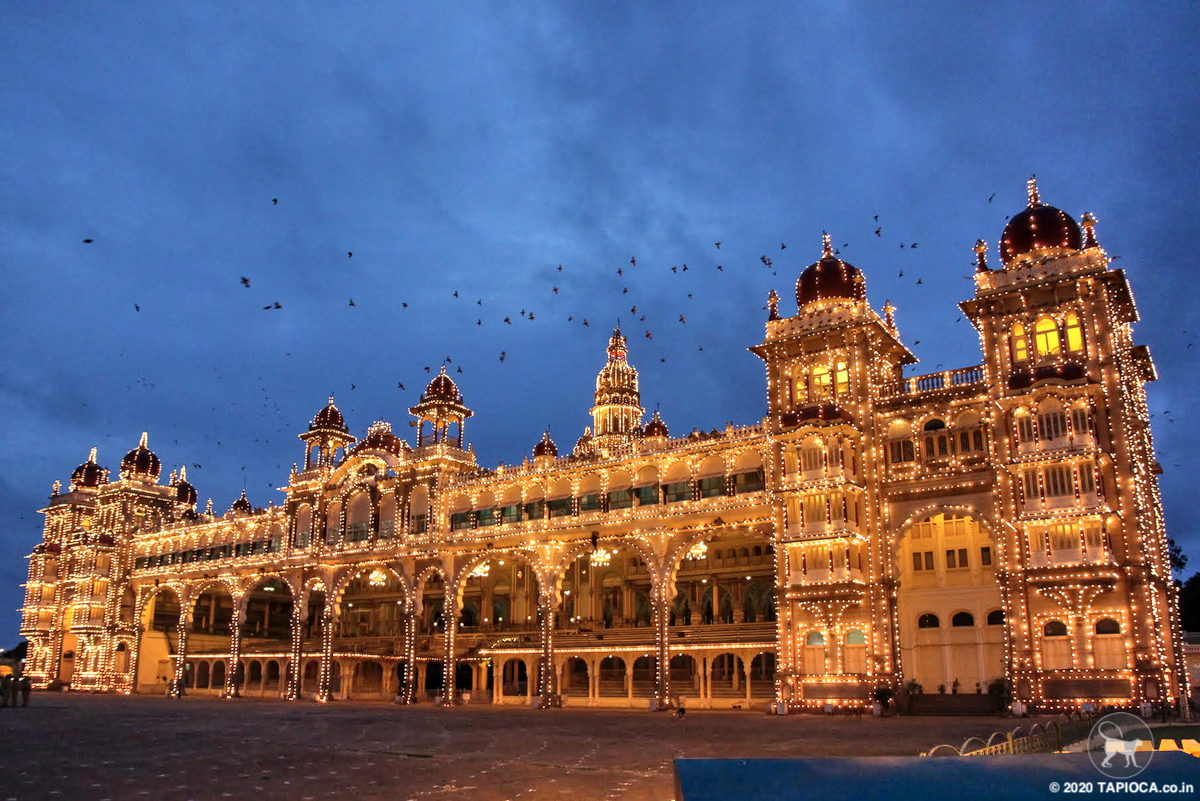
Mysore
The palace is illuminated on weekends and on festival days.
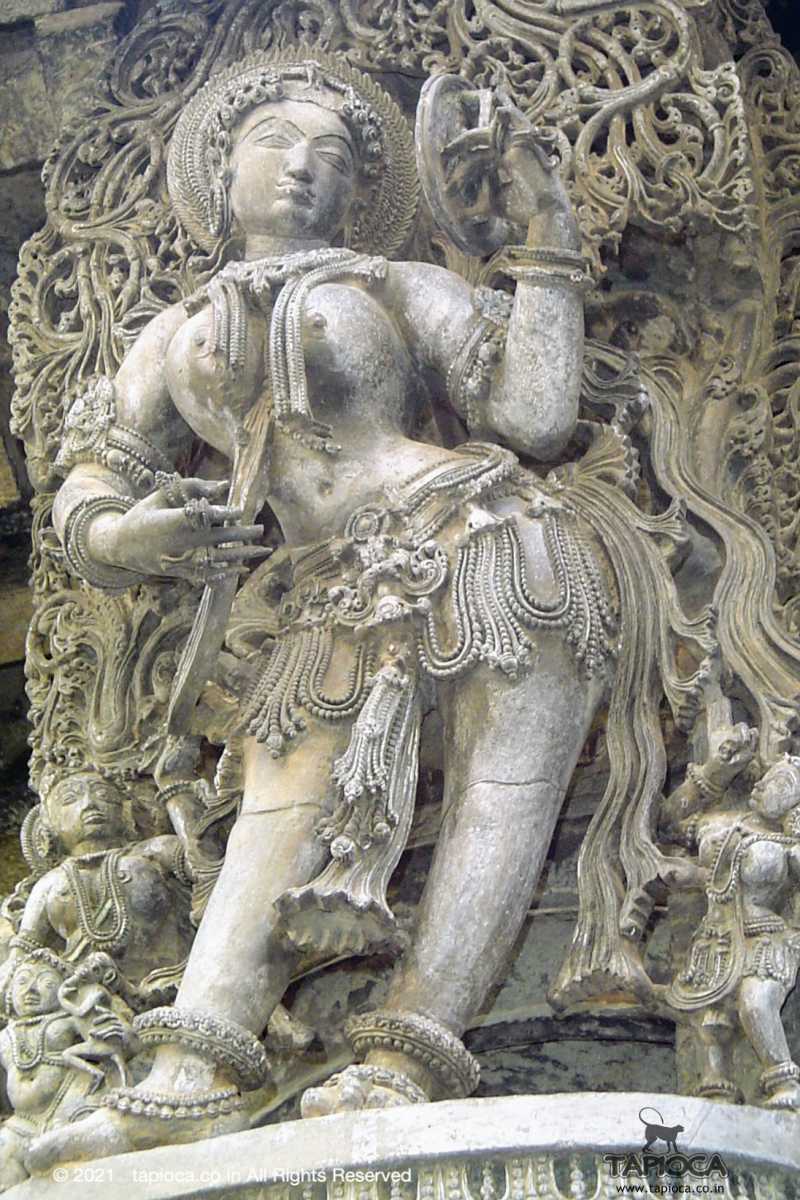
Belur
The iconic image is from the Hoysala Temple in Belur, Karnataka
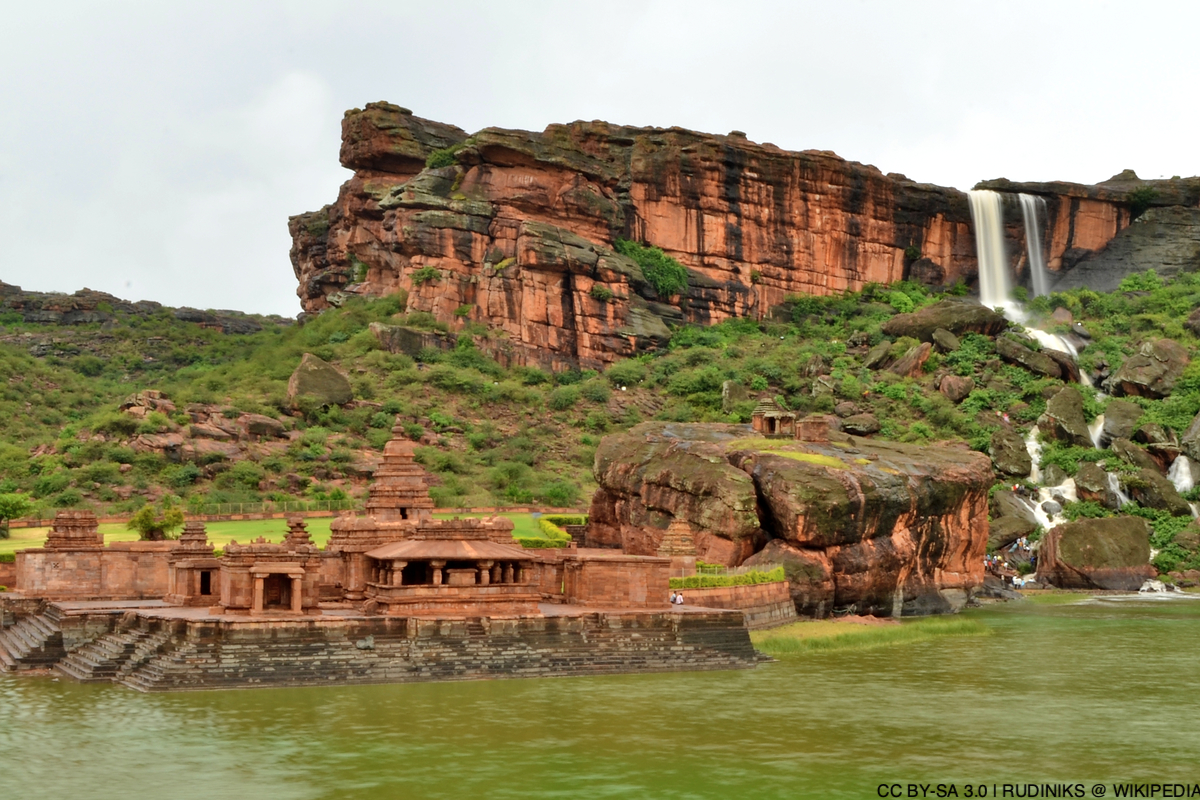
Badami
A very popular site in Badami. Monsoon season offers spectacular view of the waterfall in the backdrop
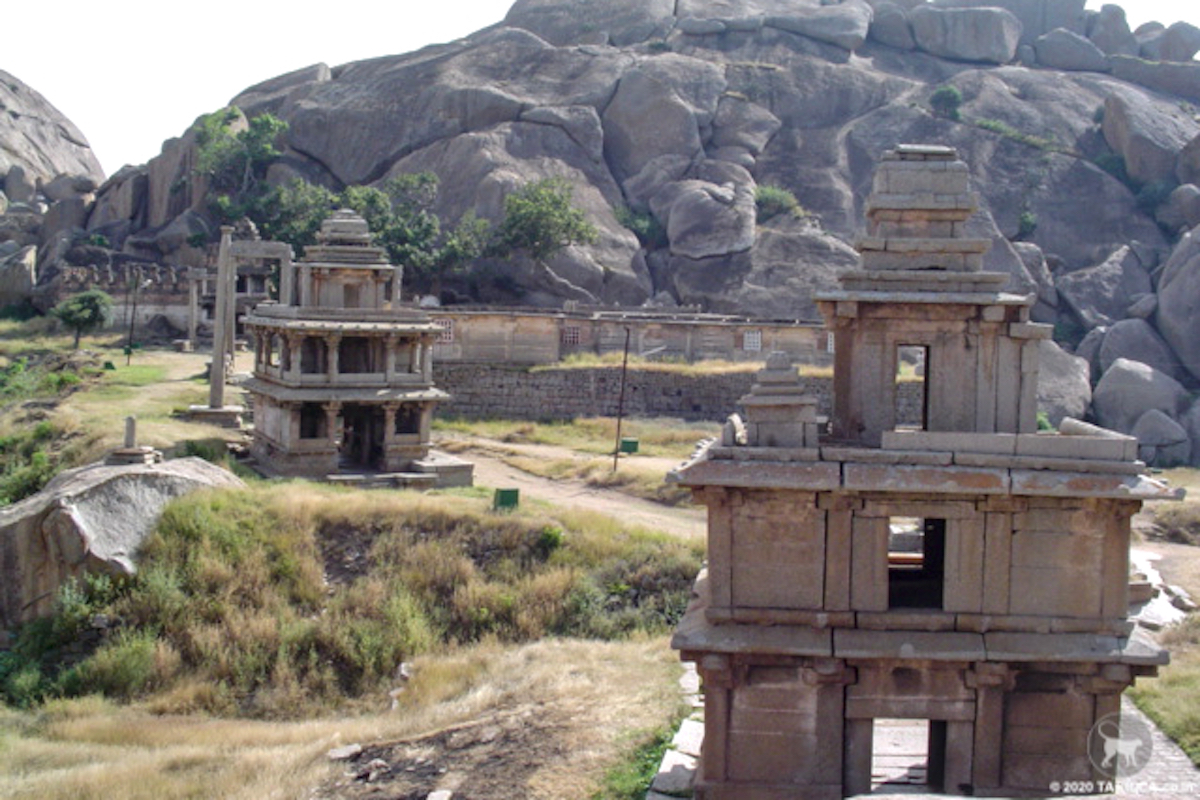
Chitradurga
The fort saddles a cluster of boulder hills
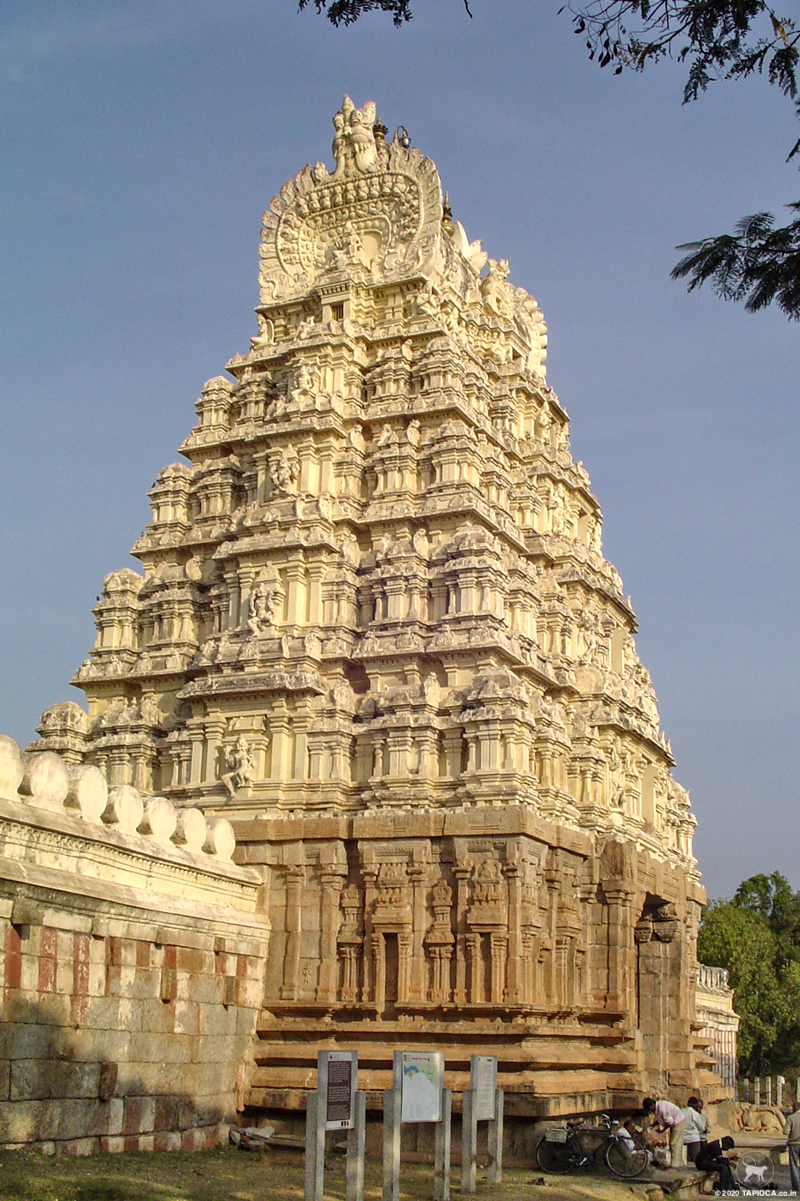
Mysore
Gopuram over entrance in the Ranganathaswamy temple at Srirangapatna
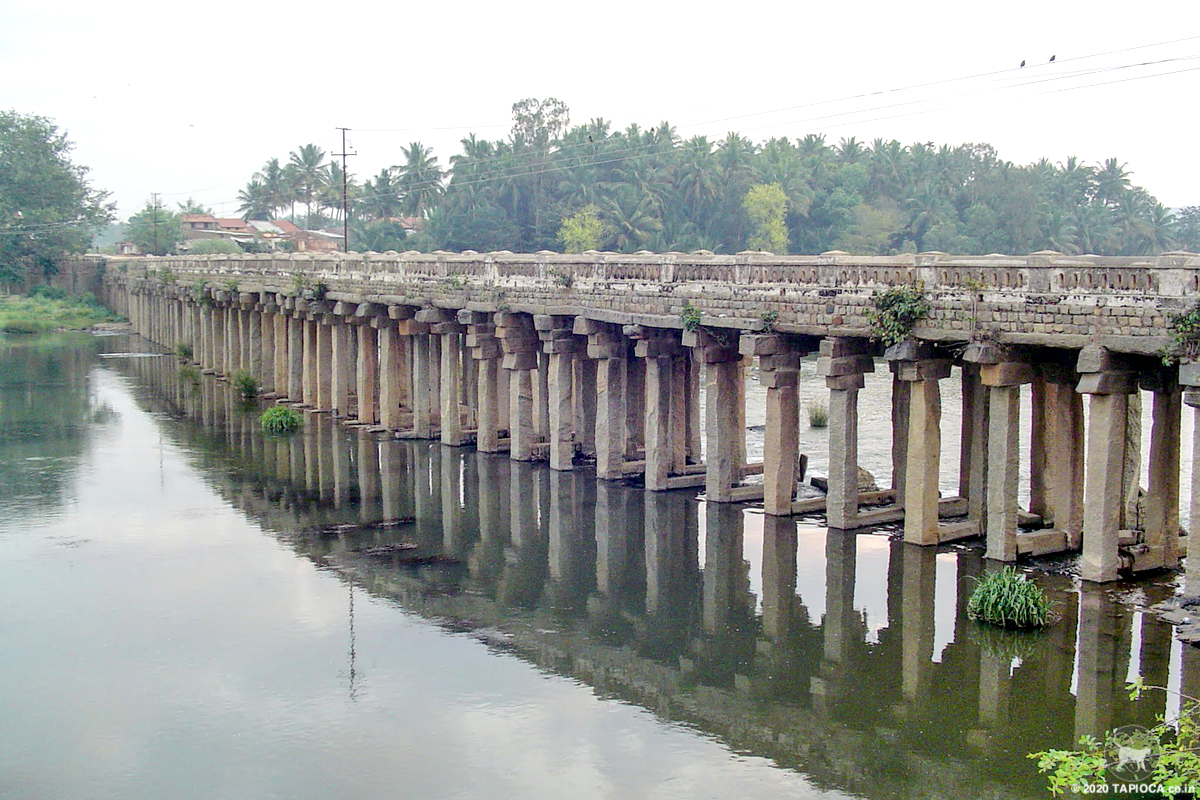
Mysore
Named after the then Governor General Marquis of Wellesley. The bridge is built (1804) of stone pillars and stone corbels and surrounded by stone girders. The bridge is very strong and has survived the heavy traffic of many years.

Mysore
Bahubali, a much revered figure among Jains, was the son of Rishabhanatha and the younger brother of Bharata Chakravartin. He is said to have meditated motionless for a year in a standing posture and that during this time, climbing plants grew around his legs
Soapstone sculptures
The beauty of the Hoysala templs , particularly its intricate carvings owes a lot to one material - Soapstone. Unlike granite, sandstone and marble used in the construction of most of India's ancient monuments, soapstone is softer with some peculiar properties that set it apar from the former materials. To give you an idea , the softer version of the soapstone can be carved even with your finger nail.
